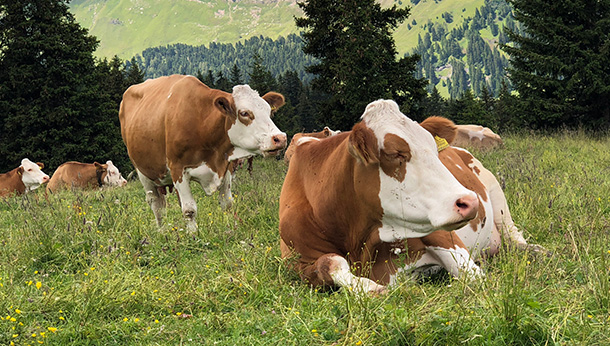
Everyone deserves a bit of time off and that includes dairy cows. Milking and calving is stressful in terms of energy for the ladies so, a little r and r is essential for good health management. Happy, healthy cows = productive cows.
The drying off period, at the beginning of the lactation cycle, is the dairy cow’s chance to recoup the energy needed for the rest of the year. It gives her a couple of months where she is not producing milk or being milked. However, the dry period comes with its own challenges in terms of managing possible udder infections. New infections can occur during this period and not become evident until later in the next lactation therefore management in this period should not be neglected.
Antibiotic Dry Cow Therapy
Since 1950, ADCT (antibiotic dry cow therapy) has been a popular way of ensuring the herd doesn’t suffer with infection when they are not lactating. Antibiotics and teat sealants are used to fight any existing infections and prevent more being introduced.
At the beginning of the dry period, when the cow’s body realises milk production is no longer required, a plug is naturally formed in each teat to prevent infection getting in. Not all cows are able to naturally form this plug and so a teat sealant is used. With ADCT, antibiotic tubes are inserted into the quarters which contain a high concentration of antibiotic in a slow release base. ADCT is about fighting existing infections and preventing new infections in the dry period.
However, blanket use of antibiotics, regardless of whether the cow has an infection or not, is now being discouraged by the government, vets and milk buyers.
Worldwide concern about antibiotic resistance within animals and the possible transfer from the animals to humans means that best practice, when it comes to antibiotics and your herd, is ‘use them as little as possible and as much as necessary’.
Some studies have also shown that using antibiotics on quarters that have no infection increases the risk of E.coli mastitis during the next lactation cycle.
Milk buyers are now insisting supplier farms adopt selective dry cow therapy in their herds and are monitoring closely.
SDCT Enters Centre Stage
The key word here is ‘selective’. Selective Dry Cow Therapy does exactly what it says on the tin. All cows being ‘dried off’ receive teat sealants but, only those cows above an agreed somatic cell count are ‘selected’ to receive the antibiotic tubes, cutting down on the use of antibiotics in those cows that don’t need them.
And don’t worry about the cows that don’t get antibiotics. The use of a teat sealant alone has been shown to be as good as, if not better than, antibiotic dry cow therapy at preventing new infections.
Nothing Is Ever Easy
That said, SDCT is not easy. It takes planning and preparation. Three essential requirements are:
- Accurate records of herd bulk, cell counts and previous mastitis cases
- Vet involvement
- Operator training
This is outweighed by the benefits of SDCT to your herd, your farm and your bottom line, as well as ensuring your farm is leading the way in the reduction of antibiotic use.
A good place to start is by having a chat with your vet about what is involved. They will be able to help you decide whether it’s feasible for your herd to begin SCDT at their next dry off by looking at herd cell counts and clinical mastitis cases. They’ll also be able to help you create a protocol for SDCT as operator training and strict hygiene protocols are of the highest importance for success.
Mike Bardsley (B. Vet Med. Cert CHP. MRCVS.), RCVS Advanced Practitioner in Cattle Health and Production and Farm Animal Lead Project Manager at Independent Vetcare, says,
"The use of antibiotics in food producing animal especially for preventative reasons has come under intense scrutiny from consumers, retailers, governments and pressure groups. Selective Dry Cow Therapy and reduction in antibiotic use generally is no longer an option but a necessity for dairy farmers."
There is no doubt that there is a move away from antibiotic dry cow therapy as selective dry cow therapy becomes the norm. All the major milk buyers are very engaged in this and see the benefit in enrolling their farms in SDCT.
Give your vet a call to arrange a chat about implementing Selective Dry Cow Therapy in your herd.